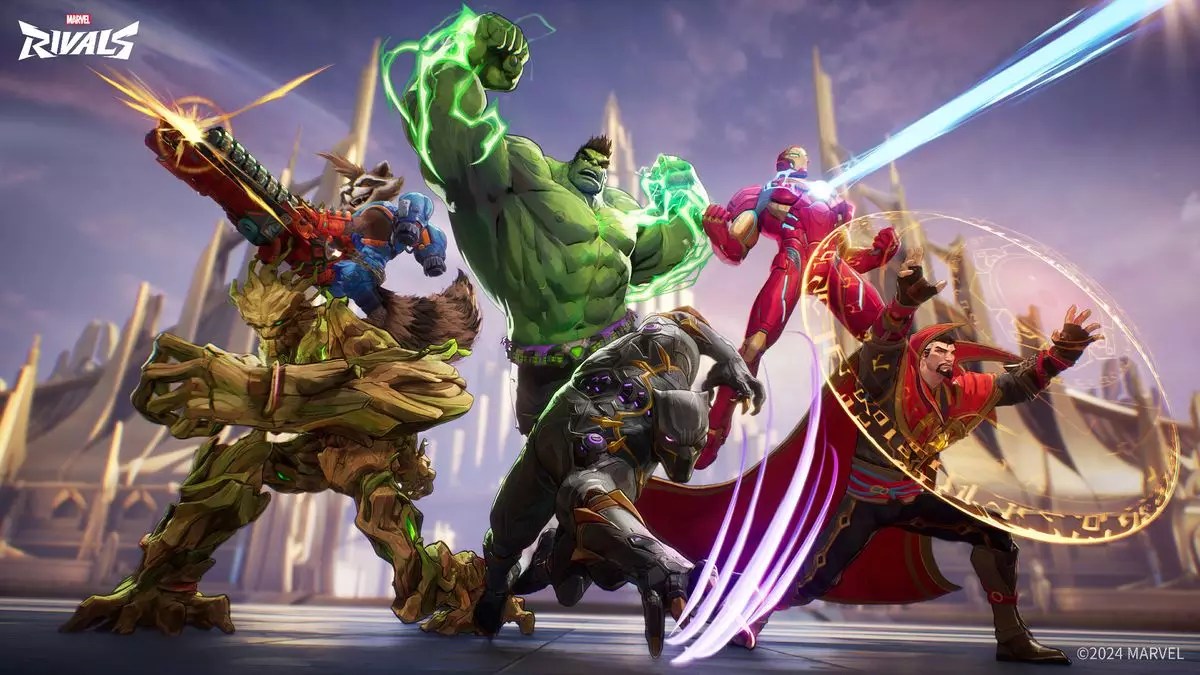The competitive landscape of any multiplayer game often sparks heated debates among players, especially around character viability and team composition. In the Marvel Rivals universe, the chaos seems inevitable, particularly when certain heroes stand out as overwhelmingly dominant while others linger in obscurity. Recent investigations into the power dynamics within the game has called into question long-held beliefs about hero effectiveness. This article delves into an insightful data analysis conducted by a dedicated fan known as Aggragating_Job9976, who unearthed surprising truths about the game’s meta through meticulous examination of gameplay statistics.
Changing the narrative surrounding Marvel Rivals heroes required a comprehensive methodology. Rather than simply relying on anecdotal evidence or subjective opinions, Aggragating_Job9976 compiled an extensive dataset by analyzing the performance of top-tier players, particularly those ranked in the TOP500. They didn’t just focus on the main heroes players used; they also considered all characters that had logged over three hours of gameplay to ensure a broad and inclusive overview of the hero landscape. This approach resulted in an impressive collection of nearly 600 data entries, although the findings were hampered slightly by 136 players opting for privacy settings on their profiles.
What made this analysis particularly compelling was the dual focus on “pick rate” and “average win rate.” The measure of a character’s win rate is often a telling indicator of success in the game, yet it can be skewed by the number of games played. Aggragating_Job9976 emphasized the importance of a balanced evaluation—both in identifying how often players choose a particular hero and how successful they are with that choice.
When one glances at the compiled tier list, notable heroes such as Doctor Strange, Hela, and Psylocke dominate the S tier, suggesting they are the crème de la crème of the selection. This counters the common perception that hulking tanks like Hulk or the formidable Iron Fist should easily secure top rankings due to their intimidating presence in matches. Instead, Iron Fist found himself relegated to a cautious B tier. This hierarchy reveals that raw damage potential or visibility in gameplay does not always equate to effectiveness in high-level play.
Aggragating_Job9976’s assertion that win rates should be carefully contextualized struck a chord in the community. For instance, while Peni Parker boasts an impressive 70.5% win rate, this is based on a relatively limited trial of around 400 games. In stark contrast, Doctor Strange achieved a commendable 64.6% win rate over a substantial 2,900 games, indicating consistent performance. Such conclusions highlight the critical point that experience and strategic selection weigh heavily in determining which characters are viable in competitive scenarios, particularly for average players.
The discussion around character rankings opens up broader conversations about psychology in competitive gaming. Players often gravitate toward characters they perceive as powerful—a phenomenon not unlike the “bandwagon effect.” This can lead to misunderstandings about a hero’s actual utility in the hands of inexperienced players. The analysis by Aggragating_Job9976 emphasizes that effective gameplay stems not only from hero strength but equally from player understanding and mastery of the game mechanics.
Furthermore, the tier list serves as a reality check for many players who might believe that simply selecting a popular character assures success. Acknowledging that success is multifaceted underlines the importance of developing a deeper understanding of character abilities, weaknesses, and matchups.
As the Marvel Rivals community continues to evolve, evaluations such as those offered by Aggragating_Job9976 serve to enrich the discussion and challenge conventions. The landscape of hero effectiveness is nuanced and filled with surprises, illustrating that even the most established beliefs may falter under the scrutiny of data analysis. Understanding the true power of heroes in the game requires a strategic approach, one that weighs both usage frequency and effectiveness—not just individual skill but also the collective dynamics of team strategies in play.
This analysis not only reshapes our understanding of the Marvel Rivals meta but also encourages players to think critically about their choices, fostering an environment where data and gameplay converge to enhance both experience and enjoyment.


Leave a Reply